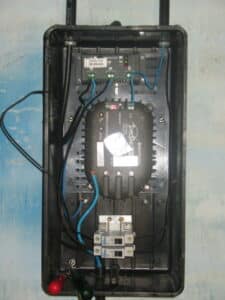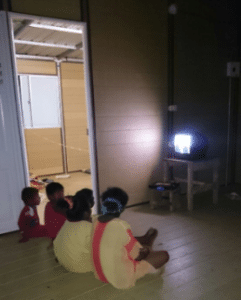Summary
- Installing solar power systems in rural homes and communities in Brazil provides electricity to many millions of people
- Solar electric system installations have the potential to reduce poverty and improve living standards by creating opportunities in areas such as health, water supply, employment, sanitation, and improved educational facilities
- Morningstar ships some 20,000 SureSine inverters to Brazil to support the program
Situation
In November of 2003, 10 million people residing in Brazil’s rural areas were without access to electricity, with approximately 90% of them living below the poverty line. That meant they lived without basic amenities others take for granted, such as electronic devices, refrigeration, and lighting, in homes, schools, and health clinics.
Worldwide, this lack of electricity in rural areas is the single biggest impediment to economic growth and contributes to isolation for many communities. For this reason, many countries have adopted ambitious rural electrification programs specifically designed to eradicate this “electrical poverty” and lift rural residents into a higher standard of living than previously possible.
Project
 The “Light for All” program was launched in 2003 by the Brazilian federal government. Coordinated by the Ministry of Mines and Energy, the program was established to deliver electricity to families in rural areas. Besides covering the equipment costs and installation fees, the program provides citizens with the necessary materials and training to operate and maintain the renewable energy installations in their communities.
The “Light for All” program was launched in 2003 by the Brazilian federal government. Coordinated by the Ministry of Mines and Energy, the program was established to deliver electricity to families in rural areas. Besides covering the equipment costs and installation fees, the program provides citizens with the necessary materials and training to operate and maintain the renewable energy installations in their communities.
The electrification program also reaches indigenous areas, including those difficult to access in the Amazon region. Challenges include transporting heavy equipment such as electrical mounting poles on boats to less accessible regions as well as passing electrical cables through rivers crossing them.
Solution
To convert the solar-generated electricity to AC and deliver off-grid AC power to run electrical loads in rural households in remote locations, twenty thousand 
Following these solar electricity residential installations, it is estimated that 81% of these families who were now able to access AC power purchased new TV sets. In addition, 71% of them bought refrigerators and 62% acquired cell phones. For the first time, many rural residents experienced the relative luxury of being able to read at night, watch a TV show, listen to music on the radio, or enjoy a cold drink.
The comprehensive Light for All electrification project enhanced and improved public services, education and welfare, employment, and income. By May 2016, 15.6 million Brazilians had benefited from the program and over 485,000 jobs were created. This unqualified success led to the program being extended into 2018 with the goal of bringing another million citizens literally out of the dark.
Morningstar Corporation features examples of our products used by our customers across a wide variety of environments and systems, to highlight their flexibility, performance, and dependability. Installation best practices and preferences can vary across diverse regions and applications, and the examples shown here are for general interest and not intended as a guide. Always consult local codes and refer to product installation manuals for correct requirements.
